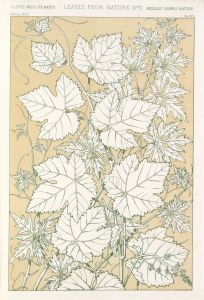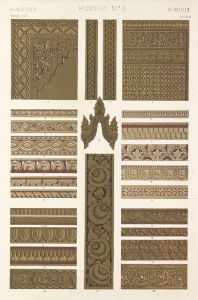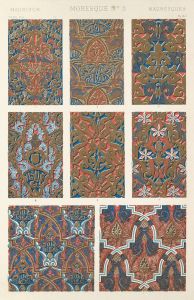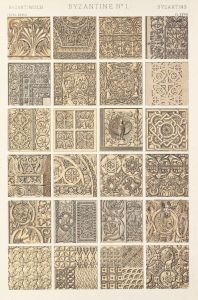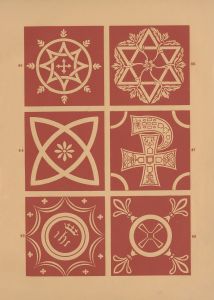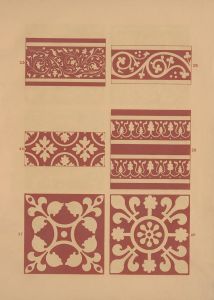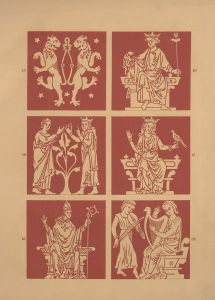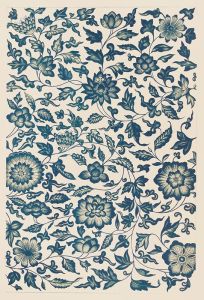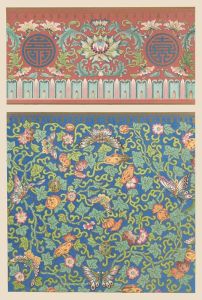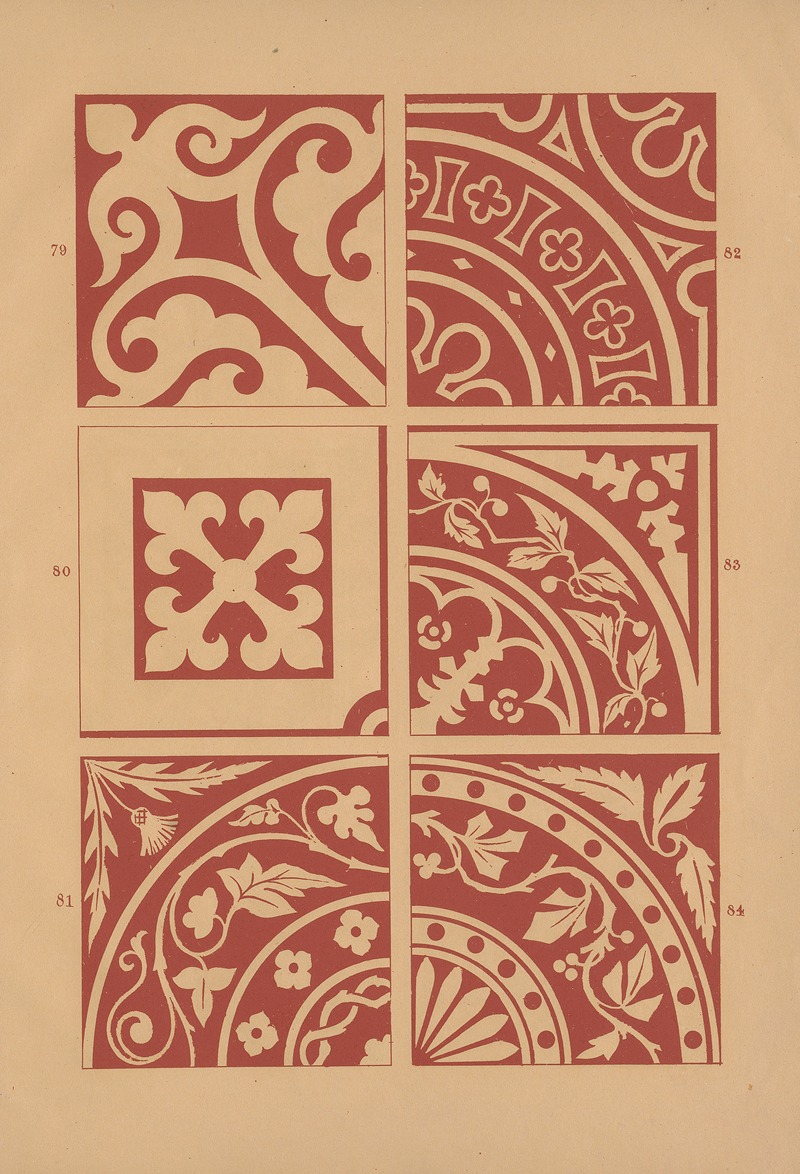
Examples of encaustic tiles Pl.13
A hand-painted replica of Owen Jones’s masterpiece Examples of encaustic tiles Pl.13, meticulously crafted by professional artists to capture the true essence of the original. Each piece is created with museum-quality canvas and rare mineral pigments, carefully painted by experienced artists with delicate brushstrokes and rich, layered colors to perfectly recreate the texture of the original artwork. Unlike machine-printed reproductions, this hand-painted version brings the painting to life, infused with the artist’s emotions and skill in every stroke. Whether for personal collection or home decoration, it instantly elevates the artistic atmosphere of any space.
"Examples of Encaustic Tiles Pl.13" is a design plate created by Owen Jones, a prominent 19th-century architect and designer known for his influential work in decorative arts and design theory. This particular plate is part of his seminal publication The Grammar of Ornament, first published in 1856. The book is a comprehensive study of decorative patterns and motifs from various cultures and historical periods, aiming to provide inspiration and guidance for designers and architects.
The plate showcases a series of encaustic tile designs, a type of ceramic tile that gained popularity in the 19th century, particularly in Victorian England. Encaustic tiles are characterized by their intricate patterns, which are created by using different colors of clay inlaid into the surface of the tile rather than being painted or glazed. This technique ensures that the designs remain durable and vibrant over time, even with heavy use.
Jones's depiction of encaustic tiles in Plate 13 reflects his commitment to the principles of design he advocated throughout his career. He emphasized the importance of studying historical and cultural precedents in design while adapting them to contemporary needs and materials. The patterns in this plate are geometric and symmetrical, showcasing the precision and craftsmanship associated with encaustic tile production. These designs were likely inspired by medieval and Gothic architectural traditions, which experienced a revival during the Victorian era.
Owen Jones's work, including this plate, played a significant role in the 19th-century design reform movement. His emphasis on the use of color, geometry, and historical references influenced not only tile design but also broader trends in architecture and interior decoration. The encaustic tiles depicted in Plate 13 would have been used in a variety of settings, including churches, public buildings, and private homes, reflecting the Victorian taste for ornate and durable decorative elements.
Jones's The Grammar of Ornament remains a key reference in the study of design history, and "Examples of Encaustic Tiles Pl.13" is a testament to his ability to synthesize historical inspiration with practical application. The plate continues to be appreciated for its aesthetic qualities and its role in documenting the design practices of the 19th century.





